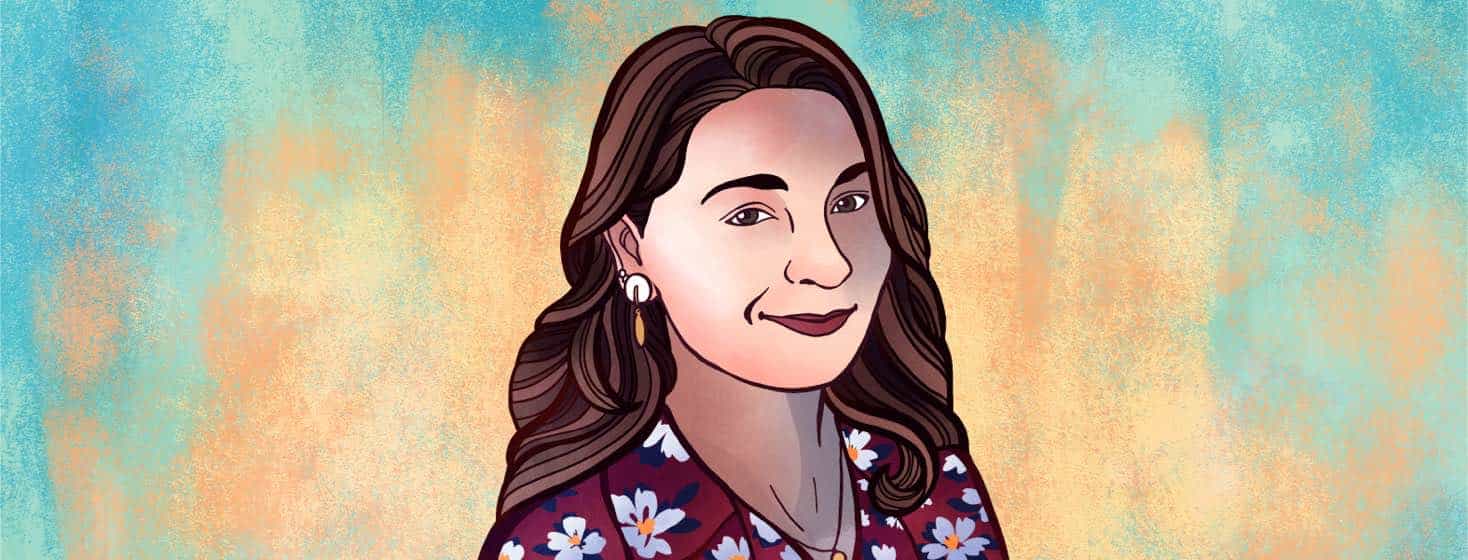Chronic Dry Eye Patient Spotlight: Diana
Diana shares the sometimes frustrating journey it took for her to get diagnosed, which treatments she has tried, and what she wishes others knew about chronic dry eye.
My path to diagnosis
My dry eye journey began around 2011. I had started noticing some discomfort with my eyes, always a little bit of a red and gritty feeling. I was working an office job in front of the computer all day, so I blamed it on the screen, as did my optometrist when I brought it up at my next appointment. Interestingly, I had been experiencing fatigue, joint pain, and muscle weakness for a few years before, but at the time, I had no idea they could be connected.
By the end of the next year, my eyes were excruciatingly painful and were always extremely bloodshot. About 50% of my eyelashes had fallen out. My cheeks and nose had turned red and somewhat inflamed. I’ve always tried to resolve health issues on my own, so I turned to online research to try and find an answer.
Getting chastised by my optometrist
The closest thing I could find that resembled what I was experiencing was ocular rosacea. When I brought this up as a possibility with my optometrist at my next appointment, I was chastised, told there was absolutely nothing wrong, and that I needed to use more over-the-counter eye drops due to my excessive computer use.
It wasn’t until 2016 when I had to find a new eye doctor that I stumbled across an office that advertised that they specialized in dry eye. I set up an appointment and was so relieved to finally be heard and have an explanation for my pain. MGD and blepharitis (caused by demodex) along with underlying systemic inflammation, which would eventually end up being diagnosed as seronegative rheumatoid arthritis.
The most difficult part of chronic dry eye
When my eyes are bad, I find myself hiding away from everything in an attempt to prevent more pain. I can’t go outside, can’t be in a room with a fan or any type of air movement. No air blowing in the car. Not only do I miss out on family interaction, but it can cause a bit of friction when everyone else is hot in the summer.
What I've done to try to treat my symptoms
After I finally received a proper diagnosis, the doctor did an in-office tea tree oil treatment on my lash line. I had a course of steroid eye drops to get the inflammation under control, and later I tried the LipiFlow treatment, which felt amazing, but did not provide long lasting relief.
I’ve tried prescription eye drops, but I just ended up with tears running down my cheeks all day while my eyes were still dry and unlubricated. At home, I keep up with tea tree wipes both morning and night. I’m supposed to be doing a heated compress at least once a day, but I do a poor job at keeping up with it.
Ultimately, getting my seronegative rheumatoid arthritis diagnosis and receiving biologic treatment to get my inflammation under control has been the biggest factor in improving my dry eye. While things aren't completely normal, there are some days I don't even think about my eyes!
Difficulty talking to others about this
Most people don’t understand the level of dry eye that we suffer with. Like with most invisible conditions, many people are dismissive, sometimes unintentionally, simply because they have no frame of reference for it.
It’s bad when even the slightest breeze from someone walking past you in a meeting feels like a cheese grater across your eyeballs, but no one could possibly see or comprehend that feeling if they haven’t felt it themselves. At times, when my eyes were at their reddest, some people would comment on how painful they looked.
What I wish others knew
Chronic dry eye often comes along with autoimmune disorders and not just Sjogren’s syndrome. Sometimes it’s even the first symptom to develop. I hope one day soon there is greater awareness and diagnostic tools for medical professionals in all fields in order to prevent unnecessary patient suffering.

Join the conversation